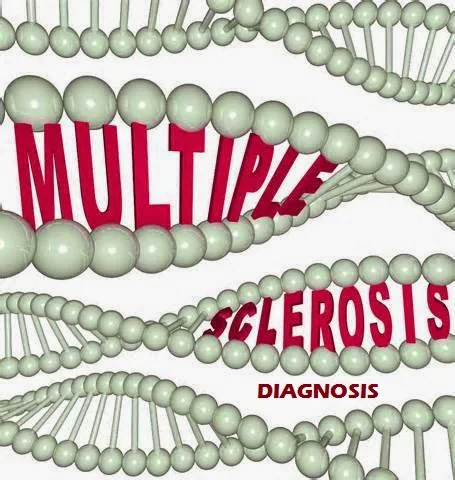Expert Health / Medical
Knowing that you have MS can be a tough thing for you and for those close to you. Advice about treatment, deal with the symptoms, and emotional aspects of management, is available through health professionals. Support networks for different individuals in each country and depend on the health care system of the institution, but you can access to:
Nerve specialist who will determine your diagnosis, your treatment of acute deterioration of natural and will be a reference if you or your doctor has a particular interest
Family doctor who can help you and your family to understand the effects of MS and that may be your experience related to health and lifestyle.
If you have specific problems you may be referred to appropriate specialists such as:
- Physiotherapists
- urologists
- psychologist
- therapist
- social workers
- advisory
- speech therapists
- dietitian
- Other services include
- Relief at home with practical jobs
- Advise you about financial management and assistance that may be required
Voluntary organizations
Voluntary organizations can provide advice, support, and practical assistance in some areas. National and local institutions MS in your state specializing in providing support for all people with MS. They can also tell you about other organizations that provide services, such as home care planning.
National Institute MS may have a lot of literature about MS that you can get for free. Many also have a helpline which can be accessed through a number of free services.
DO I HAVE TO TELLING FAMILY, FRIENDS, and BOS at THE WORK? AND WHAT SHOULD I TELL?
Deciding to tell or not that you have MS is your personal decision. For many people with MS, the disease itself is not always clearly visible, therefore there is a choice whether you want to cover the diagnosis or not. If you need practical help, either daily or at any time, it may mean you have to tell people close to you that you have MS. Your decision may depend on how your relationships with others and how you think about their reaction to the news.
Family
When you first find out that you have MS you may feel able to discuss it with the family. For many people, which is a relief if it can tell you about it. Before you discuss your diagnosis with your family members, you should consider your assumptions about how they will react. Generally, family members will be supportive. However, they may be sad to hear the news, especially if they did not know anything about MS. It would be very helpful if you have information pamphlets available to help you explain about MS and about how this disease affects you, to make sure they will understand this disease. You can decide not to tell your family if you think it will ruin your relationship or bring you to the unwanted statement regarding your condition.
Telling to Child
Maybe there is no point formally tell about MS to children who are still very small, but the important thing is that when questions were raised, their questions must be answered. Small children instinctively aware of the existence of a problem that is going on and that you're worried. You should be aware of this and understand that their behavior might sometimes be interrupted. Truth is almost never as scary as their own fear. A number of national institutions MS provides a booklet for children that can help you.
Telling to Teenage
Teen age kids need to be told but requires an approach more carefully. Although they may seem calm and indifferent, but they are actually very concerned. Their anxiety can be eliminated by the provision of information. Their concerns need to be addressed when it arises and they need to know that you want to talk to them when problems arise. Opportunity to read literature MS choice of national institutions in the country you can help.
Adolescents often feel that they should be treated like adults, and if they are not allowed to come to take responsibility for their family problems would feel hurt and angry, and as a result they will start to behave destructively. However, if their cooperation is supported, they will unexpectedly be mature and be a source of strength. Trying to keep your problem alone will not eliminate the anxiety your teen.
Telling to Parents
Telling parents about your diagnosis can also be difficult. It is difficult for parents to accept their diagnosis, and becomes very important to care about their feelings and needs. Parents can be very protective and some of them may feel that they are blamed.
When Children and Teenagers Suffering From MS
Parents of children or adolescents with MS face enormous responsibility as to what to tell the young people about the disease and how much information and responsibility can be given to the child. Many young people with MS are initially only slightly affected by this disease, and the parents, either for themselves or for the sake of the children, refused to reveal in general, for several years the effect is not clearly visible. During that time they hope the child / adolescent is able to mature into adulthood, finish school, have a career, and build a relationship.
Regular counseling advice relies on the idea that people diagnosed with MS are adults but, although not common, there are children and adolescents who suffer from MS. Although the immediate and complete disclosure of the nature of MS in general is good advice, but not always can be the right choice for a particular group of MS patients like this.
In the case of children under fifteen years of age, especially those experiencing minimal symptoms and minimal limitations, there are several explanations for the nature and prospects of the disease. Children truly realize that there is a problem that is happening, that come and go and often requires medical treatment - but parents can take responsibility for decisions and involvement with the medical side, and let the child continues to live a 'normal'.
In the case of adolescents (fifteen years and above), they are old enough to be involved in the reality of the disease and be involved in decisions that are determined by the parents, which is associated with the treatment, education, and so on. Nonetheless, it is important to remember that all adolescents are emotionally labile and has a fragile identity, and MS would be an additional burden that they have to shoulder.
Your Boss
The decision to tell your boss at work can affect your work. Maybe it will have the support or, in some cases, affect your career prospects unfairly. The legal provisions relating to candor in each country is different and you have to check it in the national MS organization in your country.
Benefits forthright
Tells about your diagnosis will be very comforting. Many people with MS say that 'hiding something will make us more depressed than storytelling'. Candor will also make it easier, if the need arises, to discuss workplace adjustments that may be required.
By explaining the problem, you will understand the reactions of others to the fact you have MS and how you are cared for and treated by co-workers. You will be able to relate honestly with others.
You will be free from concern that an employer or previous references may reveal not careful that you have a disability.
Your concerns to the proposed medical examination will be reduced, because you know that the work supervisor, insurance companies, and other parties related to the disease MS will alert you before the examination.
By telling your boss that you work with MS, you will find it easier to tell him and his co-workers on matters relating to the real nature of this disease. It also allows you to discuss with the employer about your condition changes in the future.
Disadvantages forthright
The fear of being discriminated against because of MS, for example do not get promoted, can not follow the training, and so on.
Fear of the reaction of co-workers or others.
Fear of losing your job or not offered the job (especially if it has happened before to you)
The fear that if there is something wrong happens to your job, then you are going to perceived incompetence as the cause.
WHAT SHOULD I SAY ABOUT MS THAT I SUFFERED?
Before telling other people that you have MS, you have to think in advance what they need to know. Many people who did not know the MS, or on the other hand know someone with MS but her symptoms are very different from you. Your community are the ones who are intimately connected with you and those that you usually know. Your family, friends, and employers naturally want to know what has happened to you, especially if you have symptoms that could be seen. They also may want to know what they can do to help you. If you are honest with people close to you, then you will receive help when you need it, you will also eliminate their fears and may find that they are very supportive.
You can start with a simple explanation about MS and how the disease affects you during this, so people will be aware of the possible practical support you need without imagining that MS pain that you are worse than the reality. If you possessed a standard explanation that you can use, then it will help to ensure that you feel confident to provide such information and that you give explanations are consistent. Certain common issues may have to be denied - for many people there is a stereotype about MS (for example, that all people with MS will end his life in a wheelchair) or misconceptions (eg, that the MS contagious). MS society has pamphlets and brochures that will facilitate the task. The casual acquaintance can be notified if it comes up in conversation or because you yourself want to let you know. In this case, it may not need a formal explanation.
Related Post:
Multiple Sclerosis Diagnosis






















